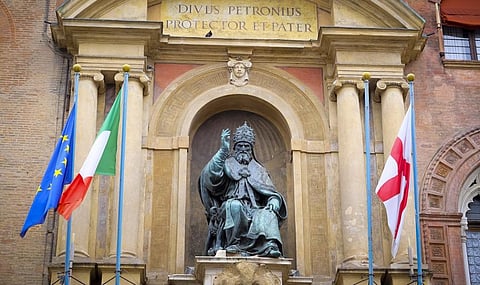Gregory XIII: How religious need spurred the reformist pope to recalculate time 440 years ago
Yet another year is rolling by. The world is bidding adieu to 2022, with its vicissitudes, as Anno Domini 2023 arrives. The Gregorian Calendar is today used worldwide. But almost 440 years, it came into force for purely religious reasons.
That religious reason was the early arrival of Easter, the most important Christian holiday. Why was this happening?
The calendar in use then was the Julian, created by Julius Caesar. It was 365 1/4 days long. This meant that the first day of spring or the Spring equinox came 10 days earlier. Easter was celebrated on the first day of spring. So, the Julian Calendar was causing a problem.
Pope Gregory XIII, who was the head of the Catholic Church from 1572 to 1585, had a new calendar instituted which solved this problem: The Gregorian.
Gregory was born Ugo Boncompagni in Bologna, Italy, which was then part of the Papal States. Italy, as we know it now, was to take shape much, much later under Giuseppe Garibaldi.
Ugo was born to parents from wealthy merchant families. He studied law at the University of Bologna and later taught at the University. In 1539, he began his long ecclesiastic career, according to an article on the University website.
Boncompagni lived during a time of great change. In 1517, the Protestant Reformation had begun, challenging the authority of Rome and the Pope across Europe.
Also at this time, the Ottomans, among the greatest Muslim powers of the day, were “knocking at the gates of Europe”.
The University of Bologna notes about its famous alumnus that as Pope, Gregory concentrated his efforts at reforming Catholicism, countering Protestantism and meeting the Ottoman challenge. He was most successful at the first, according to the University.
The calendar which bears his name is the reform by which he is most widely known though. Here is what the University article says:
The recalculation of the passage of time had been driven by pure religious need. Over the centuries, the gap between the civil year and the solar year had grown to ten days and this had shifted the date of the spring equinox, which determines the date for Easter, to 11 March.
A special committee consisting of theologians, jurists and scientists was set up to look into the matter which had been vexing the Church for at least a century.
“The committee wrote up a Compendium, which, after being verified by various professors at Catholic universities, came into force on February 24, 1582,” the University article notes.
On that same day, the Pope issued a bull Inter gravissimas, authorising the new calendar. Later that year, October 4 was followed by October 15. Ten days were shaved off from the year, thus.
Use of the calendar spread gradually with Protestant countries accepting it much later than Catholic ones. With European colonisation, it spread across the world.
Is the calendar still relevant in today’s time? Certainly, it has proved to be the best that humanity has at the moment. However, one cannot discount the possibility that somewhere down the line, it may be replaced to meet the needs of today.
Still, the 440-year-old calendar has bound the whole of humanity together. And for that, we can thank Pope Gregory XIII.


